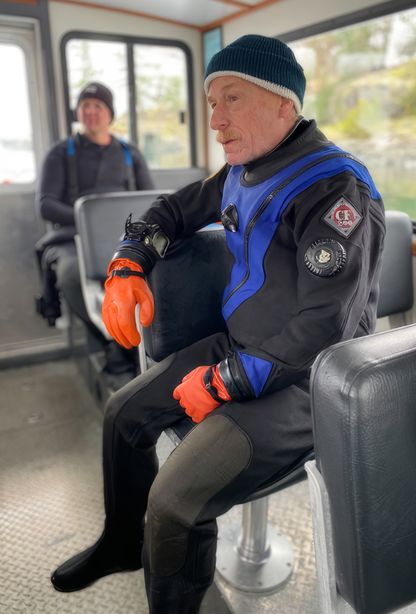Adam Geiger
Adam Geiger is a director/writer/producer/director of photography (DoP) whose films have delved into diverse topics, from the dingo of Australia’s outback and the surprisingly intelligent urban pigeon to the social impact of alcohol in a Nat Geo special and the complex life of coral on the Great Barrier Reef.
Geiger was a director and cinematographer in the hit Netflix-BBC series “Life in Color” with David Attenborough and Disney-Nat Geo’s equally high-rating “Shark Beach” — where, as underwater DoP, Geiger filmed and directed Chris Hemsworth’s first-ever dive with sharks. In “Limitless,” Geiger was again underwater DoP as Hemsworth was drown-proofed via a series of underwater stress tests. He’s as comfortable directing a large crew as he is filming on his own out in nature, but nowhere is he more comfortable than with a camera under the sea.
Over the last two-plus years, Geiger has dedicated himself to “Secrets of the Octopus,” spending about a year of that time underwater with eight key octopus species around the world.
Among the top marine filmmakers in the world, his work has taken him from deep-sea hydrothermal vents and the holy grail of shipwrecks, the San Jose, to the treasures of the pirate ship Whydah. Part of the Emmy® Award-winning “Secrets of the Whales” cinematography team, his other awards for writing and cinematography include the Critic’s Choice Best Animal/Nature Show; the Eureka Prize for Science Journalism; the Cine Golden Eagle; the TeleVisual award; the TV Times Favorite Factual Show; and Best Animal Behavior awards from the International Wildlife, Jackson Wild, and Blue Ocean Film festivals.
With degrees in marine science and filmmaking, Geiger is the founder of SeaLight Pictures, where he also helps develop new underwater camera technology, new creative concepts, and supervises words and pictures through to online color grade, music and graphics. Mentored by Cousteau cameraman Luis Prezelin, he’s a former member of IATSE 600 as a director of photography and has been a staff producer at National Geographic’s Natural History Unit in Washington, D.C.








